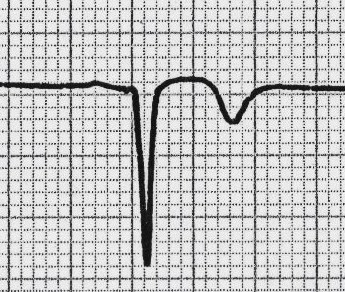ஏலியன் மற்றும் யூஎப்ஒ நம்பிக்கையாளர்கள், நிலவு என்பது மனிதர்களையும் பூமி கிரகத்தையும் கண்காணிக்கும் ஒரு ஏலியன் தளம் (Gaint Base) என்றும் நம்புகின்றனர்.'நிலவின் இருப்பை விட, நிலவு என்று ஒன்று கிடையாது என்பதை நிரூபிப்பது தான் மிகவும் எளிமையானது' என்கிறார் நாசா விஞ்ஞானியான ராபின் பிரட்..!
நிலவை சுற்றிய மர்மங்களுக்கும் குழப்பங்களுக்கும் அடித்தளமாய் இருப்பது, நிலவு திட்டமிட்டு 'கட்டப்பட்டது' என்பதை நிரூபிக்கும் 7 ஆதாரங்கள் தான்..!
ஆதாரம் #1 :
1969 நவம்பரில், நாசா வேண்டுமென்றே சந்திரனில் ஒரு டன் வெடிப்பு ஏற்படுத்தும் பாதிப்பு அளவிலான தாக்கத்தை ஏற்படுத்த தனது லூனார் மாடூலை (lunar module) நிலவின் மேல் மோத செய்தது.அந்த மோதலில் இருந்து அதிர்ச்சி அலைகளை உருவாக்கி நிலவில் என்ன நேர்கிறது என்பதை ஆராயப் பார்த்தது மோதலையும் நிகழ்த்தியது. மோதலுக்கு பின்பு சற்றும் எதிர்பார்க்காத வண்ணம் சுமார் 30 நிமிடங்களுக்கு நிலவில் மணி அடிப்பது போல அதிர்வொலி ஏற்பட்டுள்ளது.மோதலின் போது நிலவு அதிர்வொலி மட்டும் வெளிக்கிடவில்லை, அதனுள் இருக்கும் பிரம்மாண்டமான நீரியல் தடையை நிரூபிக்கிறது என்று கூறுகிறார் கென் ஜான்சன் (தரவு மற்றும் புகைப்படம் கட்டுப்பாட்டு துறை மேற்பார்வையாளர்). இதன் மூலம் சந்திரன் திட்டமிட்டு வடிவமைக்கப்பட்ட ஒன்றாக தெரிகிறது என்கின்றன கோட்பாடுகள்.
ஆதாரம் #2 :
சந்திரனில் கிடைக்கப்பெற்ற சில கூறுகள் (elements) ஆனது, நிலவிற்கு துளியும் தொடர்பில்லாத கூறுகள் ஆகும்..!சில நிலவு பாறைகளில் பதப்படுத்தப்பட்ட மற்றும் இதுவரை எங்குமே இயற்கையாக கிடைக்கப் பெறாத உலோகங்கள் ஆன பிராஸ், மைக்கா,யுரேனியம் 236 மற்றும் நெருப்பியம் 237 ஆகியவைகளின் கூறுகள் கண்டுப்பிடிக்கப்பட்டன.யுரேனியம் 236 ஆனது அணுசக்தி மற்றும் மறுசுழற்சி செய்யப்பட்ட யுரேனியத்தில் காணப்படும் கதிரியக்க அணு கழிவாகும். இதெப்படி நிலவில் கிடைக்க பெறுகிறது..?
ஆதாரம் #3 :
பிற கிரக பொருட்கள் மிகவும் திடமான மைய பாகம் கொண்டவைகள் ஆகும் ஆனால் பூமியின் நிலவிற்கு திடமான மையப்பகுதி கிடையாது.நிலவின் உட்பகுதியானது வெற்று பகுதியாக அல்லது குறைந்த தீவிரம் (very low-intensity interior) கொண்டதாக இருப்பது 100 சதவிகிதம் உண்மை என்று ஆராய்ச்சியாளர்கள் உறுதியாக கூறுகிறார்கள்.
ஆதாரம் #4 :
சந்திரன் பூமியை விட மிகவும் பழைமையானதாகும். பிரபஞ்சத்தில் இதுவரை அறியப்பட்ட நிலவு போன்ற செயற்கைக்கோள் விண்வெளி பொருள் போல் வேறெந்த பொருளும் இல்லை, நிலவு மிகவும் விசித்திரமானது..!விஞ்ஞானிகள் கருத்துப்படி, நிலவு கிட்டத்தட்ட 800,000 ஆண்டுகள் பூமியை விட பழைமையானது ஆகும். இந்தவொரு விடயமும் நிலவின் மீது ஏகப்பட்ட புதிர்களை திணிக்கிறது..!
ஆதாரம் #5 :
நிலவின் நம்பமுடியாத சுற்றுப்பாதை. சூரிய மண்டலத்திலேயே மிகவும் துல்லியமான ஒரு வட்ட கோளப்பாதையில் (perfect circular orbit) உள்ள ஒரே விண்வெளி பொருள் நிலவு தான்..!அதாவது நிலவு ஒரு இயற்கையான ஒரு விண் உலக பொருள் போல் செயல்படவில்லை. அது மட்டுமின்றி சூரிய குடும்பத்தில் காணப்படும் பிற எந்தவொரு நிலவின் பண்புகளோடும் பூமி கிரக நிலவு ஒற்றுப்போகவில்லை.எல்லாவற்றிற்கும் மேலாக பூமியில் எங்கிருந்து நிலவை பார்த்தாலும் நிலவின் ஒரு புறம் மட்டும் தான் தென்படுகிறது, இதெல்லாம் சேர்ந்து நிலவு இயற்கையாக உருவான ஒன்றில்லை என்ற சந்தேகத்தை கிளப்புகின்றன.
ஆதாரம் #6 :
சில சந்திர பாறைகளில் பூமியில் கிடைக்கும் 'டைட்டானியம் மிகுதி' பாறைகள் காட்டிலும் பத்து மடங்கு அதிக டைட்டானியம் கலந்திருப்பது கண்டறியப்பட்டுள்ளது.பூமியில், நாம் சூப்பர்சோனிக் ஜெட் விமானங்கள் , ஆழமான டைவிங் நீர்மூழ்கி கப்பல்கள் மற்றும் விண்கலம் தயாரிக்க டைட்டானியம் பயன்படுத்துகிறோம் என்பது குறிப்பிடத்தக்கது.
ஆதாரம் #7 :
நிலவின் துல்லியமான நிலை. பூமி கிரகத்தின் செயல்பாடுக்கு ஏற்ற வண்ணம் மிகவும் துல்லியமான நிலையில், நிச்சயமான வேகத்தில் நிலவு நிலை கொண்டுள்ளது.நிலவை துல்லியமாக செயல் பட வைப்பது எது என்பது இன்று வரையிலாக ஒரு புதிர் தான்..!
இதுபோன்ற நிலவின் இயற்கைக்கு மாறான சுற்றுப்பாதை மற்றும் ஒழுங்கற்ற தொகுப்பு ஆகியவைகள், நிலவு திட்டமிட்டு 'கட்டப்பட்டது' என்ற நூற்றுக்கணக்கான கேள்விகளையும், சந்தேகங்களையும் எழுப்பி கொண்டே தான் இருக்கின்றன..!
Crdt:muthuraj
கா.அருண் பாண்டியன்.






























